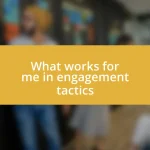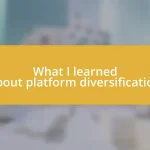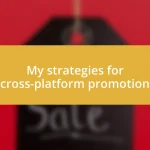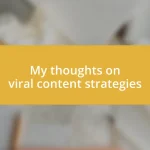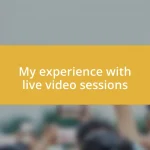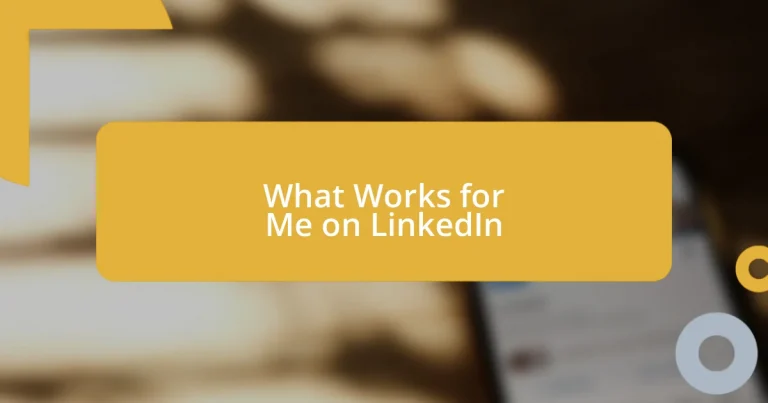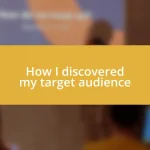Key takeaways:
- LinkedIn is a powerful networking tool that connects professionals, fosters unexpected opportunities, and serves as an industry news hub.
- Building an effective LinkedIn profile requires a professional photo, compelling headline, engaging summary, quantifiable experience, and highlighted skills.
- Engaging content, personalized connection requests, active participation in groups, and leveraging analytics are essential strategies for maximizing LinkedIn’s potential.

Understanding LinkedIn’s Purpose
When I first joined LinkedIn, I was under the impression it was just another social media platform, like Facebook for professionals. However, I quickly discovered that LinkedIn serves a unique purpose: it’s a powerful tool for building professional networks and showcasing your skills and experience. Have you ever wondered how one conversation could lead to an unexpected opportunity? That’s the magic of LinkedIn—connections often lead to pathways we never anticipated.
The platform is designed to bridge gaps between potential employers and job seekers, making it a vibrant marketplace of ideas and talent. I vividly remember a moment when a former colleague reached out through a mutual connection, resulting in a collaboration that not only reignited my passion for my field but also led to new opportunities. It opened my eyes to how valuable a single professional relationship can be, introducing me to mentors, partners, and friends I never knew I needed.
Additionally, LinkedIn acts as an industry news hub, where professionals can stay updated on trends and developments. I often find myself reading articles shared by my connections that spark interesting conversations or new approaches in my work. Isn’t it fascinating how a single post can inspire a fresh perspective? Embracing LinkedIn’s purpose means tapping into its resources, allowing it to expand not just your network, but your horizons as well.
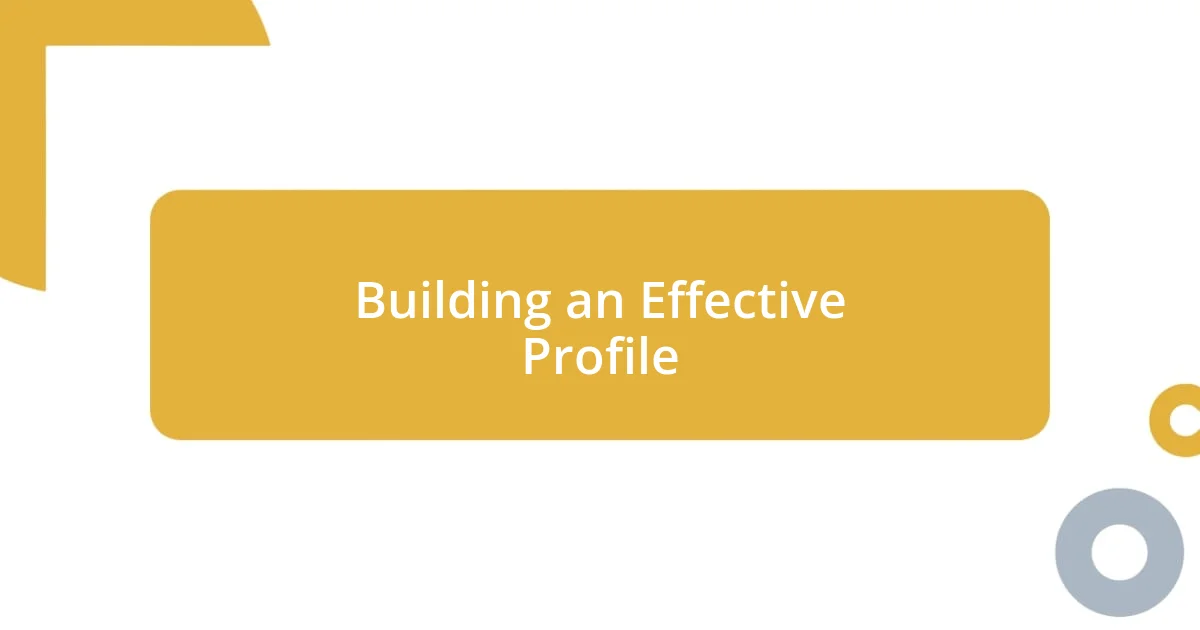
Building an Effective Profile
Building an effective LinkedIn profile is more than just filling in your job history; it’s about creating a dynamic representation of who you are professionally. I remember the first time I revamped my profile: I focused on using a professional photo, a strong headline, and an engaging summary. This simple change made my profile stand out, which led to more connection requests and engagement. Suddenly, I felt like I was part of a vibrant community rather than just a name in a database.
To ensure your profile resonates with others, consider these key elements:
- Professional Photo: Choose a clear, approachable image that reflects your personality.
- Compelling Headline: Use this space to encapsulate your expertise and career goals succinctly.
- Engaging Summary: Craft a narrative that shares your professional journey, including your passions and aspirations.
- Experience Details: Provide quantifiable achievements in your work history to showcase your impact.
- Skills and Endorsements: Highlight relevant skills, and encourage colleagues to endorse you; this builds credibility.
Each of these aspects adds depth to your profile, making it a true reflection of your professional self, which opens doors to meaningful connections.
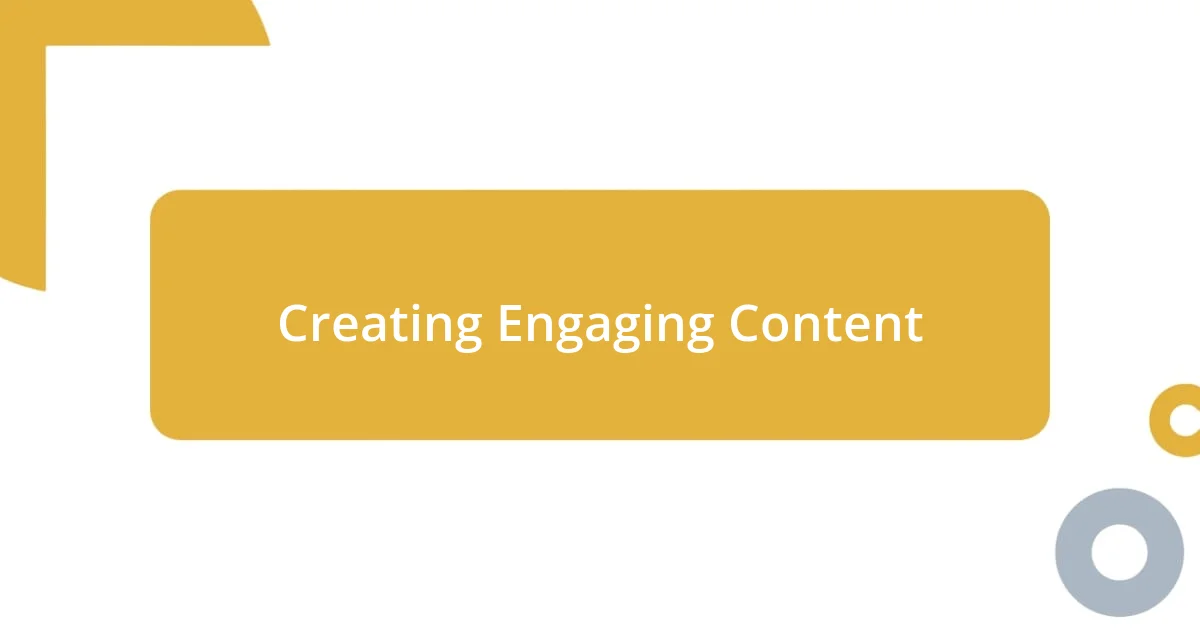
Creating Engaging Content
Creating engaging content on LinkedIn is crucial for capturing your audience’s attention. I’ve experimented with various content types, and I find that storytelling resonates the most. For example, when I share personal experiences or lessons learned from challenges, the engagement often surges. People appreciate authenticity; they want to connect with real narratives that reflect the human side of our professional journeys.
Another effective strategy is to incorporate visuals. A well-designed infographic or a striking image can enhance your message and make it more shareable. I once paired a post about industry trends with an infographic summarizing key statistics, and the response was overwhelming. The visual element not only made the content more digestible but also encouraged discussions in the comments, leading to valuable connections and exchanges of ideas.
To truly engage your audience, don’t forget to ask questions. I often end my posts with an open-ended question related to the topic. For instance, after sharing insights on leadership styles, I might ask, “What leadership approach has worked best for you?” This tactic invites others to contribute their thoughts and experiences, fostering a sense of community and dialogue that keeps people coming back for more.
| Content Type | Effectiveness |
|---|---|
| Storytelling | High – personal narratives resonate well |
| Visuals | Medium – aids engagement and shareability |
| Questions | High – encourages community interaction |
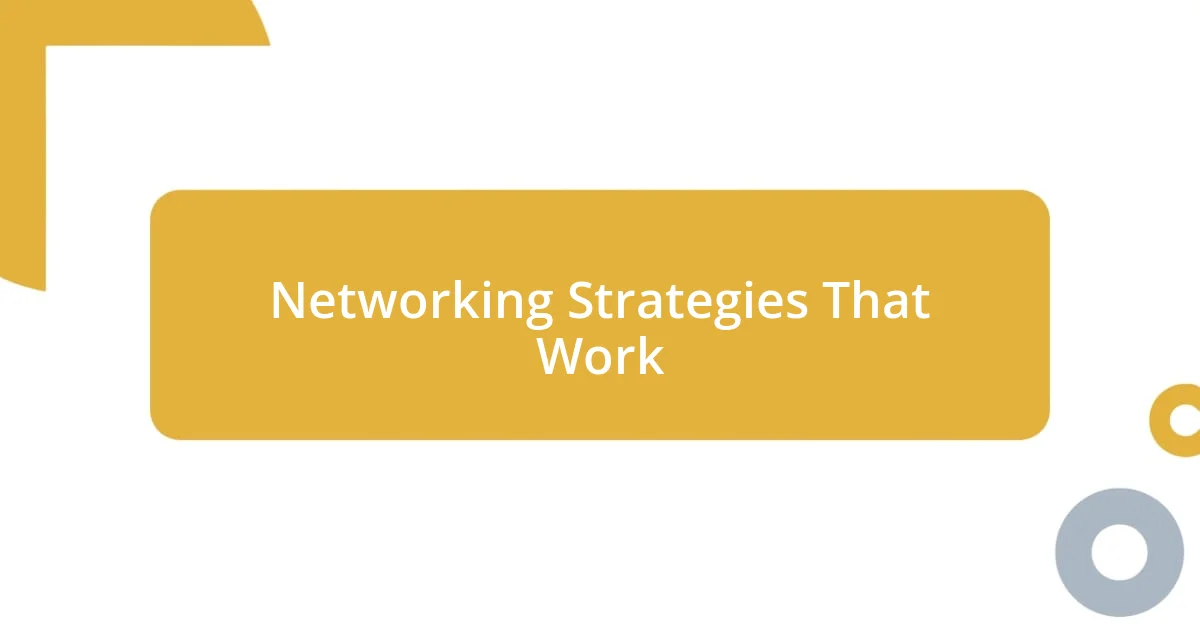
Networking Strategies That Work
One of my favorite networking strategies on LinkedIn involves reaching out with personalized connection requests. I take a moment to read the person’s profile and find a common interest or shared connection, which I mention in my request. I remember reaching out to a supply chain professional I admired, expressing my interest in their recent project. Not only did they accept my request, but we ended up having a rich conversation that led to valuable insights about industry trends.
I also encourage active participation in relevant LinkedIn groups. Joining these groups has been a game-changer for me. In one group focused on sustainable business practices, I shared a post about my experiences with eco-friendly supply chains and received an influx of comments and connections. This interaction not only elevated my visibility but also connected me with like-minded professionals eager to share their own insights, creating a collaborative environment filled with new learning opportunities.
Don’t overlook the power of follow-up messages after establishing new connections. I find that taking the time to send a simple “thank you” or a message sharing a relevant article can foster stronger relationships. I recently sent a follow-up to someone I met at a virtual networking event, thanking them for their insights and sharing a book recommendation related to our conversation. This thoughtful approach didn’t just keep the dialogue going; it turned a brief encounter into a meaningful connection that I continue to nurture. How do you usually follow up after meeting someone new on LinkedIn? It’s a step that can really make a difference!
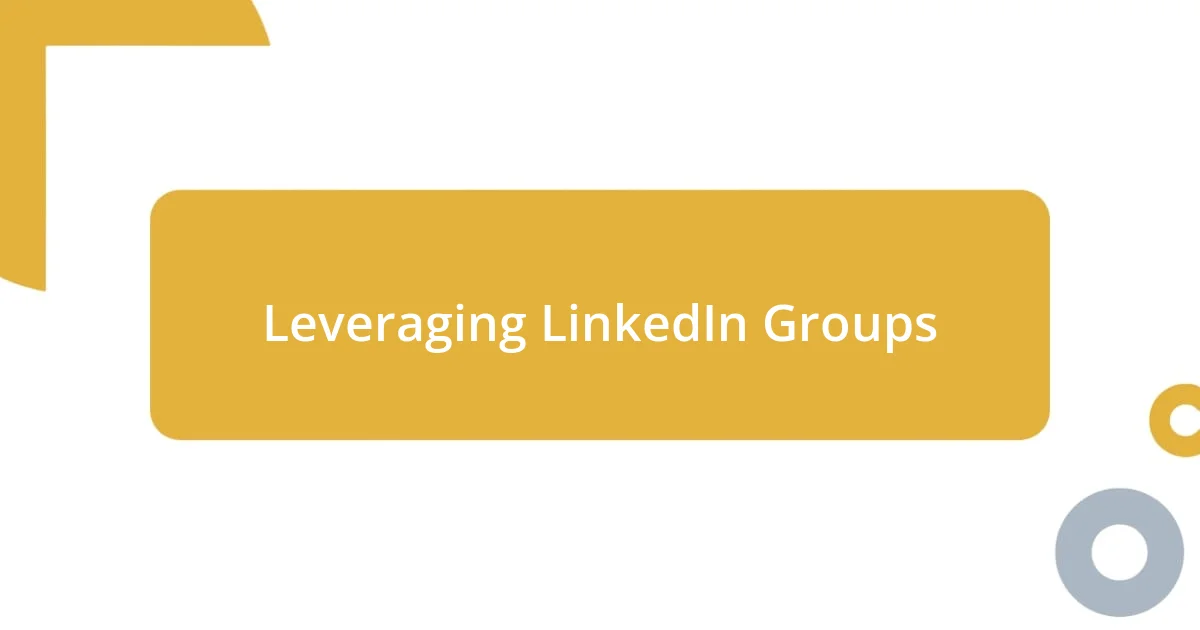
Leveraging LinkedIn Groups
Engaging with LinkedIn Groups has been a transformative part of my networking strategy. There’s something powerful about being part of a community where everyone shares a common interest. I vividly remember joining a group dedicated to marketing strategies, and my first post sparked an intense discussion. It felt fantastic to exchange ideas with people from diverse backgrounds. I realized then that these groups offer a unique platform to learn and grow, not to mention the connections you can foster along the way.
The real magic happens when you contribute to discussions meaningfully. I often share industry articles or ask questions that invite feedback. For instance, I posted a thought-provoking piece on emerging marketing trends and asked, “What strategies have you found most effective?” The responses were not just comments; they opened doors to virtual coffee chats and collaborative projects. It’s a reminder that when you contribute, you’re not just sharing knowledge but also inviting opportunities.
And let’s not forget about the joy of recognizing familiar names in the comments. It builds a sense of camaraderie, almost like seeing a friend in a crowded room. Every time someone replies to my post or tags me in a discussion, it reinforces my belief in the importance of networking. So, what if you reached out to that one person whose comment intrigued you? It could lead to an enlightening conversation. Just imagine the insights you could gain! I’ve often found that the connections formed through these group interactions become some of the most valuable in my professional journey.
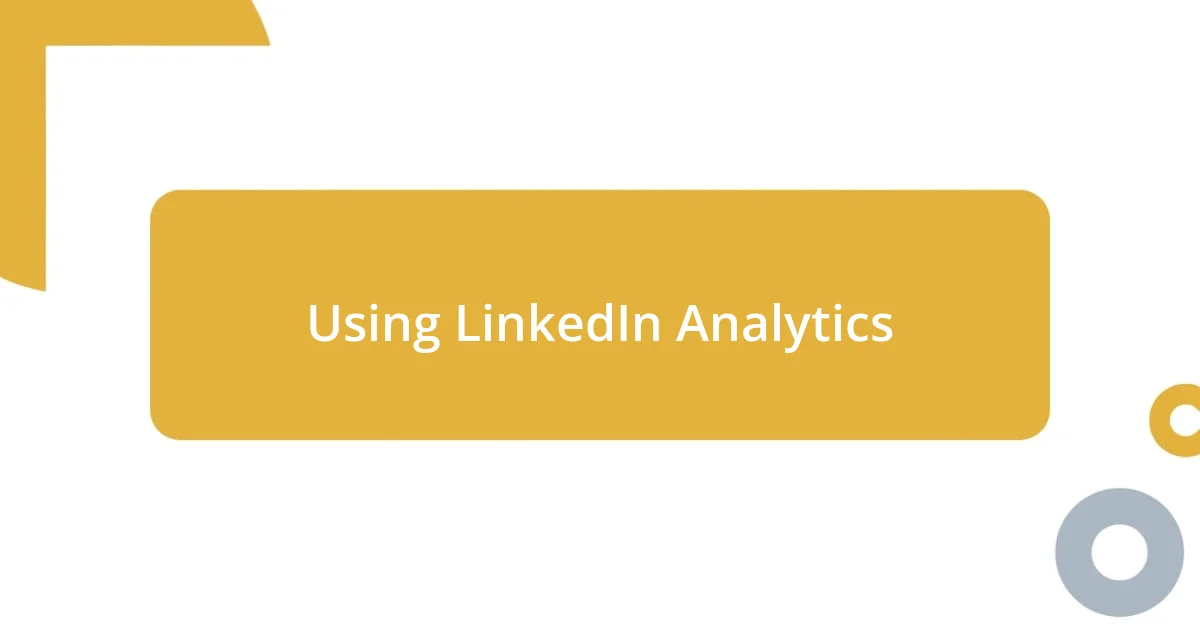
Using LinkedIn Analytics
Using LinkedIn Analytics has been a revelation for me in understanding my audience better. I remember looking at the post analytics one day and realizing that the content about supply chain challenges resonated with my network far more than my usual insights. It was a lightbulb moment that highlighted the importance of tailoring my posts based on what engages my audience. Have you ever experienced a similar epiphany when diving into your analytics?
The metrics provided by LinkedIn, such as post engagement and audience demographics, guide my content strategy. After analyzing my most successful articles, I noticed a trend: visuals attract more clicks and interactions. It encouraged me to start incorporating more infographics. The shift not only increased my visibility but also transformed how I approach content creation. What metrics do you find most helpful when evaluating your LinkedIn performance?
Moreover, tracking follower growth over time gives me a sense of my networking trajectory. I particularly recall a month where I saw a significant spike in my connections coinciding with a series of posts I had shared. It made me realize that consistent, value-driven content can lead to meaningful growth. Have you observed how your content has influenced your own follower journey? Engaging with analytics helps reinforce the strategies that work for me, encouraging a cycle of learning and improving my LinkedIn presence.
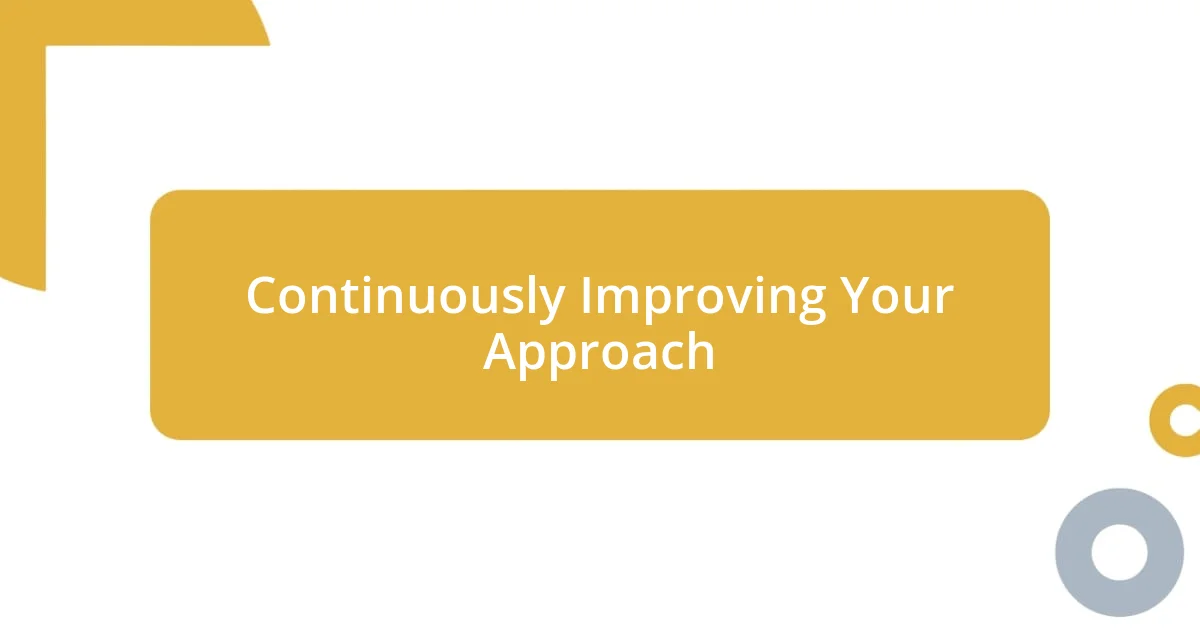
Continuously Improving Your Approach
Continuous improvement is an essential part of navigating LinkedIn effectively. I recall a time when I decided to audit my profile and realized my headline didn’t clearly convey my expertise. It felt like putting on a great outfit but forgetting to accessorize! After a few tweaks, that simple change increased my profile visit rate significantly. Have you ever taken a moment to reflect on how your profile represents you?
Additionally, I often revisit my content strategy based on feedback and changing trends. There was this phase when I received fantastic engagement on video content, so I began experimenting with short clips that addressed common industry challenges. The excitement of seeing my audience connect with my ideas was incredible and pushed me to explore new formats. Have you experimented with different types of posts to see what resonates most with your audience?
Lastly, I believe that seeking constructive feedback is a pivotal part of improvement. One day, a colleague of mine suggested that I ask for reviews on my articles. That simple shift enabled me to gain insights that were eye-opening. I started a small feedback loop, which offered perspectives I had never considered. When was the last time you reached out for feedback and found it beneficial? Embracing feedback not only strengthens your voice but also enriches the conversation within your network.

